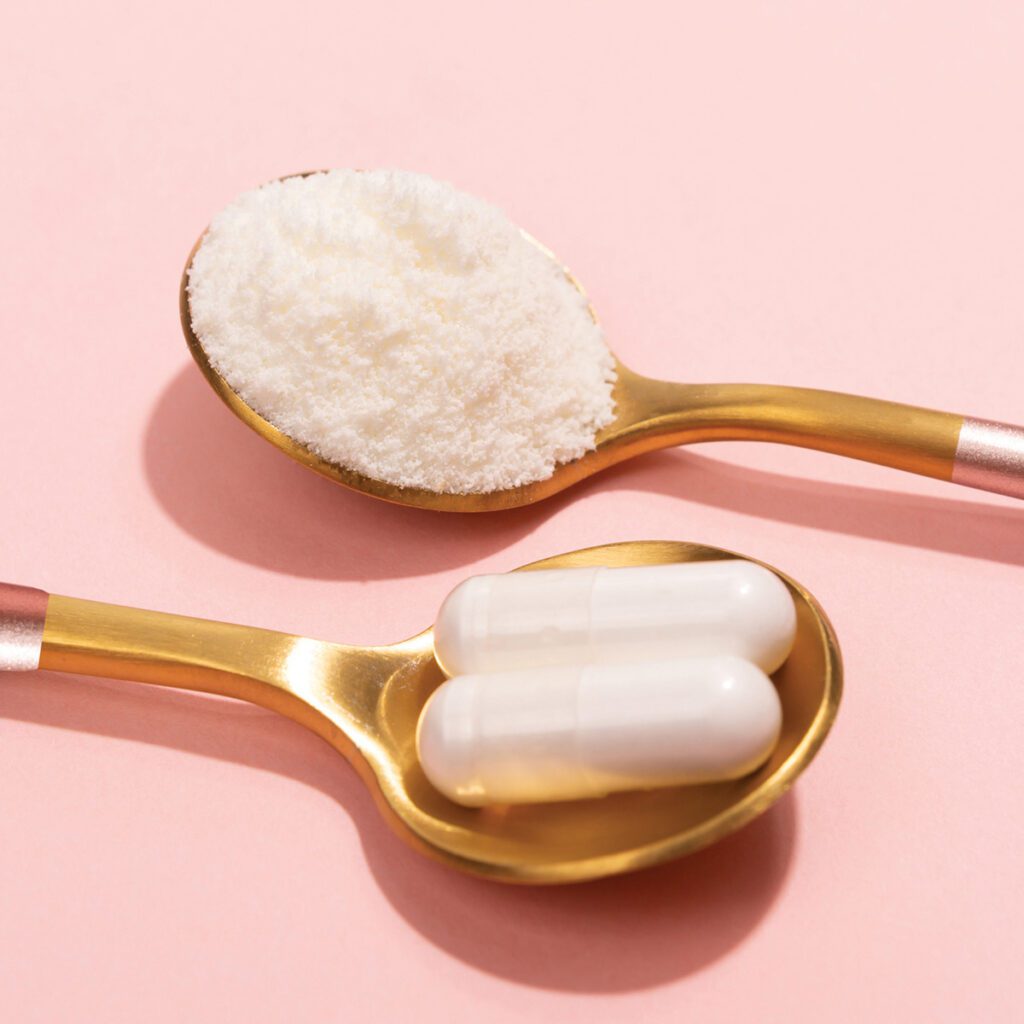You’ve heard of type 1 and type 2 diabetes, but have you heard of prediabetes? That’s when your blood sugar levels are too high, but not quite type 2 diabetes high … yet. With prediabetes, your cells don’t respond normally to insulin, so your pancreas increases its insulin production to try to make the cells respond. Eventually it can’t keep up, and your blood sugar rises. “Without regulation, prediabetes can eventually develop to a diabetes diagnosis,” says Dracey Adams, registered nurse and diabetes clinician with Hamilton Diabetes and Endocrinology Center.
Fortunately, intervention for prediabetes is possible. “Learning that you have prediabetes is like getting a warning sign that the bridge is out before you find yourself crashing over the cliff,” explains Adams. “Take the opportunity to make the changes before you develop the diabetes disease and your life quite literally depends on it.”

The Truth About Prediabetes
The statistics are staggering. More than 1 in 3 American adults has prediabetes, and according to the Centers for Disease Control and Prevention (CDC), 90% of them are unaware they have it. With no visible symptoms, prediabetes is impossible to diagnose without a blood glucose test.
As with other health-related issues, the earlier you discover prediabetes, the better chance you have of successfully reversing or treating it. That’s why blood glucose screenings are recommended for adults 45 and older, and even sooner if you are overweight and have other common risk factors for prediabetes or type 2 diabetes like family history, low levels of physical activity, or polycystic ovarian syndrome.
Whether you’ve been diagnosed with prediabetes or been told that your glucose levels are close to the prediabetic range, you can reduce your risk of developing full-blown type 2 diabetes with manageable lifestyle changes like improving your diet and increasing your physical activity.
Improve Your Diet.
If you have prediabetes, you should eat like you already have type 2 diabetes. But changing your diet all at once can be a daunting task. The key to improving your diet for the long term is to start with a few small, sustainable changes at a time and work your way up. “Don’t try to change everything all at once,” says Adams. “Start with exchanging your regular sodas for water. Eliminating one soda a day can be a huge step.”
Here are additional nutritional recommendations for those with prediabetes:
Choose Food with a Low glycemic index.
The glycemic index (often referred to as GI) is a scale that ranks carbs from 0 to 100 based on the extent to which they increase your blood sugar.


Did you know?
Losing just 5-7% of your body weight can make a huge difference toward lowering your risk of type 2 diabetes.
Foods with a high GI are quickly digested and metabolized, which results in a blood sugar spike. Low GI carbs are metabolized slower, keeping your blood sugar levels steadier.
Reduce Your Carb Intake.
The best way to improve your blood sugar is to reduce your carb intake. Eating the same number of healthy carbs around the same time each day can help stabilize your blood sugar. Plus, counting carbs for three well-balanced meals is a lot easier to keep up with than trying to monitor your carbs while snacking all day. (FYI: 15 grams of carbs is equivalent to one serving.)
Switch to whole grains.
Whole grains like quinoa, buckwheat, brown rice, and oats are good sources of fiber. These whole grains help slow down the absorption of sugar into your blood. Not to mention, they’ve got tons of vitamins and minerals, making them a much better choice than refined or processed carbs, such as white bread and white rice.
Up your fiber intake.
Fiber helps you feel full longer after meals, which is crucial in avoiding overeating. Plus, it takes longer for your body to digest fiber, which means a steadier blood sugar rise rather than a nasty spike with a guaranteed plummet. Examples of high fiber foods include broccoli, quinoa, and lentils.
Practice portion control.
Portion control could be the single most important piece of this puzzle. If you’re making all the right changes to content but still making all the wrong choices on portions, it can nullify most of the benefits. Read the labels on your food and pay close attention to the portion size and the calories associated with it. Most of the time our usual portions are way more than the recommended size.
Pay Attention to the Mix.
“Only a quarter of your plate should be carbohydrates,” explains Dr. Jenifer Herra, internal medicine physician with CHI Memorial Family Practice Associates – Soddy Daisy. “The other quarter should be protein (preferably lean), and the remaining half should be fruits or vegetables.”
Be mindful.
A popular practice is mindful eating, which just means paying attention to what you’re doing. Eat when you’re hungry; stop when you’re full. Focus more on the experience of eating, including the smells, flavors, and textures of the food. It can help you slow down, listen to your body, and make better choices for foods and portions.
Say no to cereal.
Most cereal, even those claiming to be healthy, are highly processed, contain excessive amounts of sugar, and lack enough fiber and protein. Cereal is a particularly bad way for someone with diabetes or prediabetes to start their day.
Avoid pre-packaged “sugar-free” foods.
People trying to watch their sugar consumption may default to these sweet treats to stay in line and satisfy their craving. However, these are often passable substitutes because they include a bunch of added chemicals (to simulate the taste of sugar) and a high fat content. You’re better off going for the real deal – just control yourself on the portion. You might find you’re satisfied with just a taste or two instead of the entire treat.
Up Your Fitness Routine.
Regular exercise is important for everyone but especially those with prediabetes. Exercise causes muscles to use glucose for energy and helps the cells work more effectively with insulin. The CDC recommends at least 150 minutes of moderate exercise per week. That breaks down to only 30 minutes, five days a week. Totally doable! Here are some suggestions directed specifically toward fighting prediabetes to get you started:
Start small.
If you don’t exercise at all, begin with low-intensity activity and short duration. Increase your level of activity gradually to avoid injury. Dr. Herra recommends starting with brisk walking. “It gets your heart rate up and burns calories,” she says.


As you work to make these changes, remember it can take time. Be patient with yourself! As Dr. Herra says, “Begin with the end in mind – good habits become a lifestyle that will revolutionize your health.”
She also recommends water aerobics for those with joint issues and taking a light walk after each meal. “Just a 5-minute walk helps with digestion and blood sugar levels.”
Try strength training.
Simple strength training helps to control blood sugar and improve the action of your body’s own insulin. Stronger, bigger muscles use more calories as energy, so weightlifting can help maintain your body fat. Push-ups, bicep curls, and sit-ups are all good examples of strength training.
Practice the “3-for-30 Rule.”
This means three minutes of light activity for every 30 minutes spent sedentary. Walking, leg lifts, overhead arm stretches, or desk chair swivels are all quick, easy exercises you can try to get your blood circulating without working up a sweat.
Make it fun.
Today’s technology gives you tons of possibilities. Try listening to audiobooks or podcasts, use activity tracker apps for fun competition, and invite friends. Whatever makes it more fun and tolerable for you, do it!
Break up your workouts.
Working out for three 10-minute bursts feels easier to fit into your schedule than completing one 30-minute-long workout. Plus, research shows adding more activity throughout your day, even quick bursts, helps decrease blood sugar spikes.
Create a schedule.
Breaking up your workouts into smaller, more manageable periods will help it feel more achievable, but scheduling time to do these shorter workouts will help you stick with it!


Dracey Adams
Registered Nurse and Diabetes Clinician, Hamilton Diabetes and Endocrinology Center


Dr. Jenifer Herra
Internal Medicine Physician, CHI Memorial Family Practice Associates – Soddy Daisy



